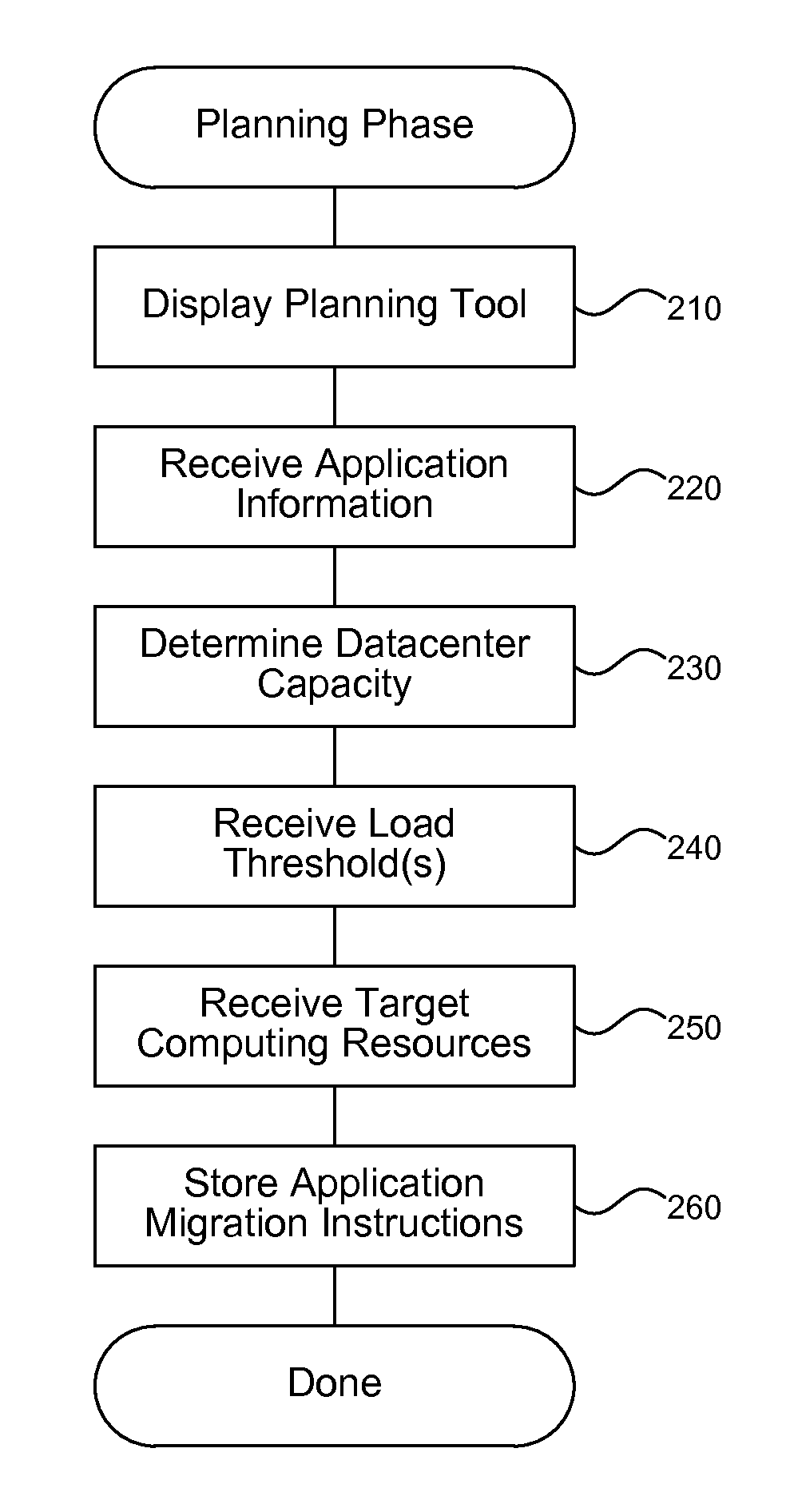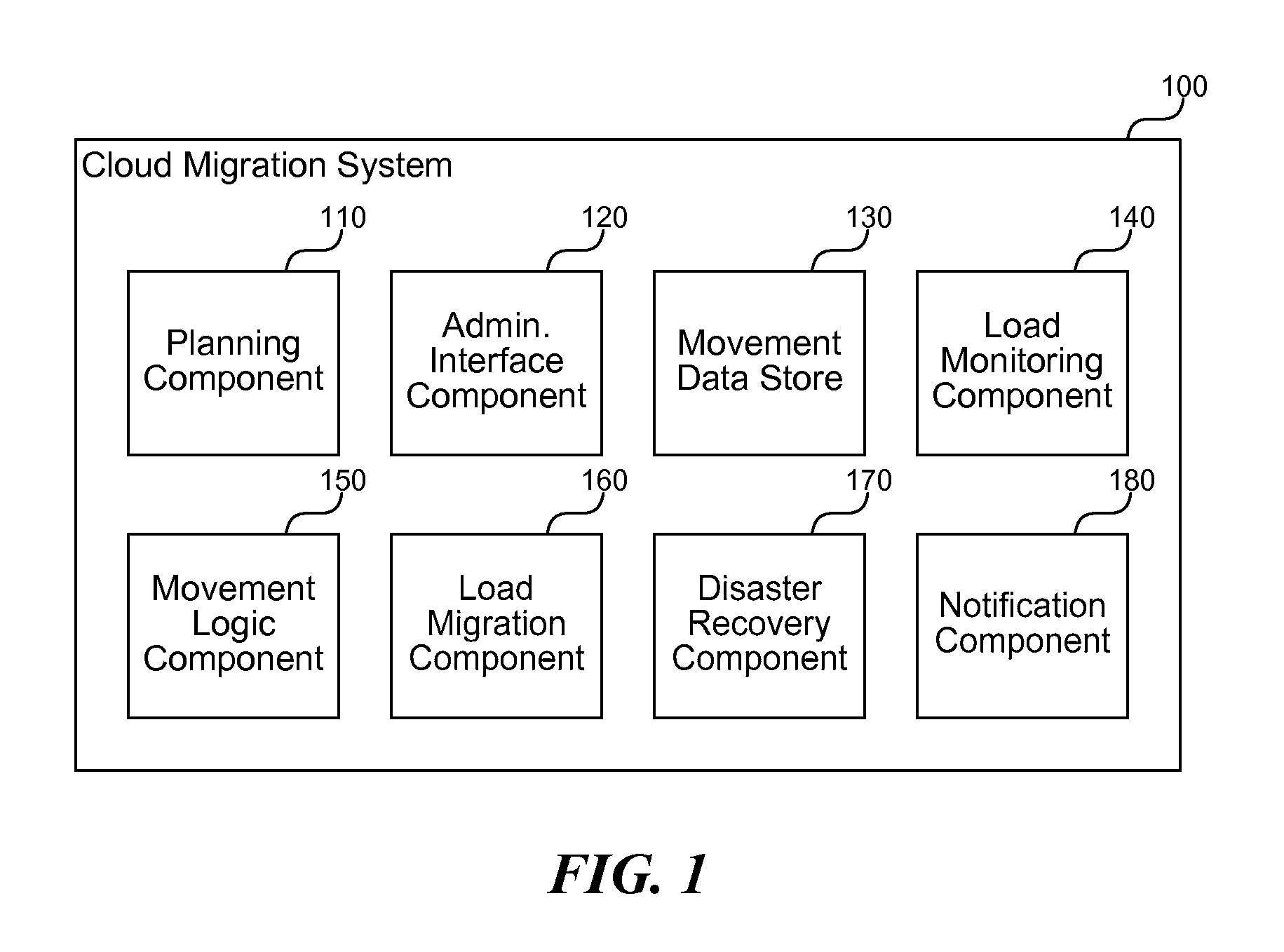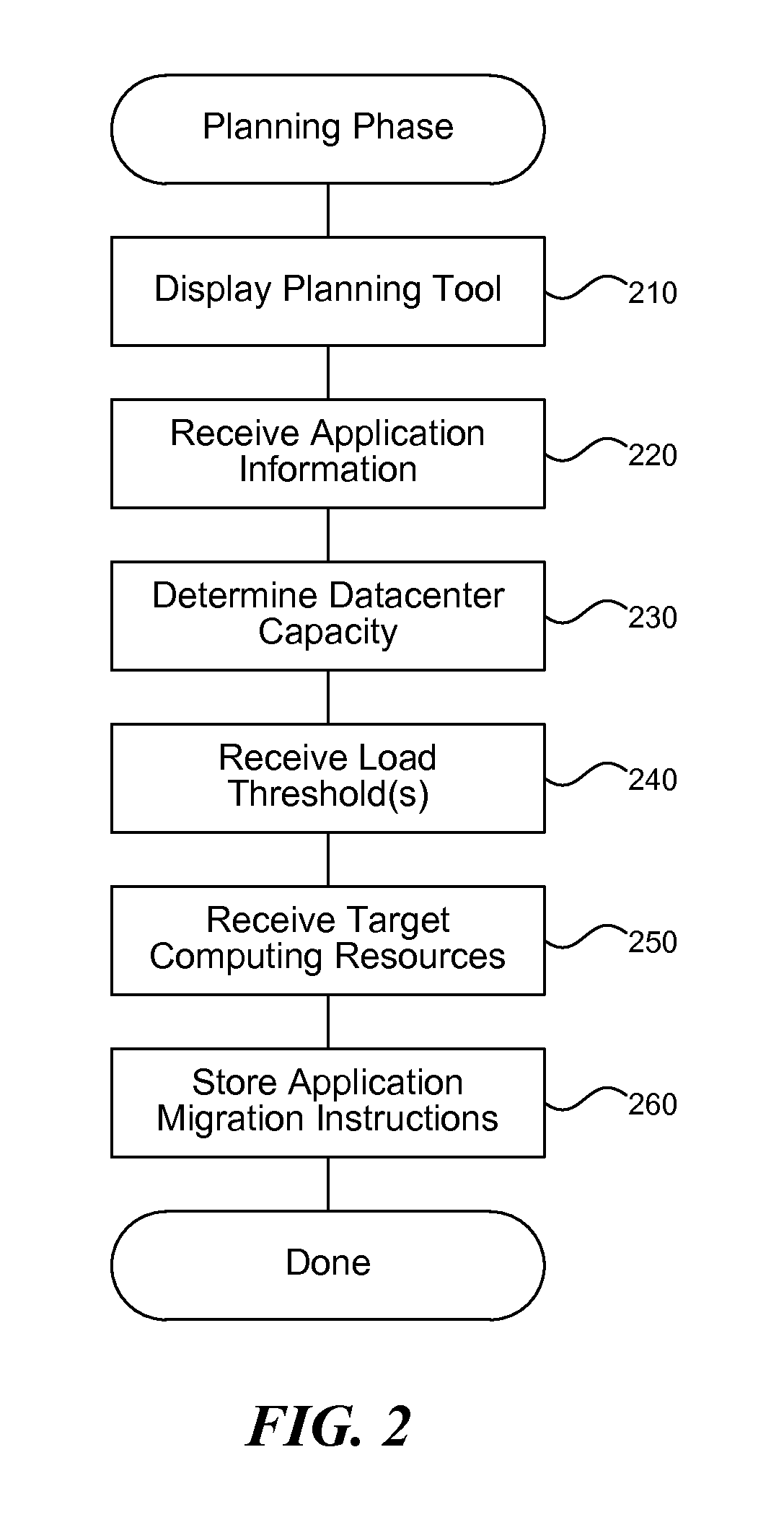Cross-cloud computing for capacity management and disaster recovery
a technology of applied in the field of cross-cloud computing for capacity management and disaster recovery, can solve the problems of many redundant functions performed by organizations across the world, high management expense in terms of both equipment and personnel for monitoring and performing maintenance on the datacenter, and high cost of datacenters, etc., to facilitate an orderly move, facilitate the effect of migrating additional load to the cloud or other resources, and small and more efficien
- Summary
- Abstract
- Description
- Claims
- Application Information
AI Technical Summary
Benefits of technology
Problems solved by technology
Method used
Image
Examples
Embodiment Construction
[0010]A cloud migration system is described herein that provides capacity management and disaster recovery by detecting peak load conditions and automatically moving computing to another computing resource (and back) and by providing computing across two or more clouds and moving completely to one in the case of a disaster at one site. This allows enterprises to plan for local resources for a sustained level of load and to leverage cloud-based resources for peak or other unusual loads. In many cases, an enterprise's business is such that a particular time of year is busier than others, and extra resources may only be needed during those times. For example, tax-planning enterprises are particular busy in mid-April, e-commerce sites experience holiday rushes around Thanksgiving and Christmas, and so on. The cloud migration system monitors loads within a datacenter and detects a threshold that indicates that the current load is nearing the datacenter's capacity. For example, the system...
PUM
 Login to View More
Login to View More Abstract
Description
Claims
Application Information
 Login to View More
Login to View More - R&D
- Intellectual Property
- Life Sciences
- Materials
- Tech Scout
- Unparalleled Data Quality
- Higher Quality Content
- 60% Fewer Hallucinations
Browse by: Latest US Patents, China's latest patents, Technical Efficacy Thesaurus, Application Domain, Technology Topic, Popular Technical Reports.
© 2025 PatSnap. All rights reserved.Legal|Privacy policy|Modern Slavery Act Transparency Statement|Sitemap|About US| Contact US: help@patsnap.com



